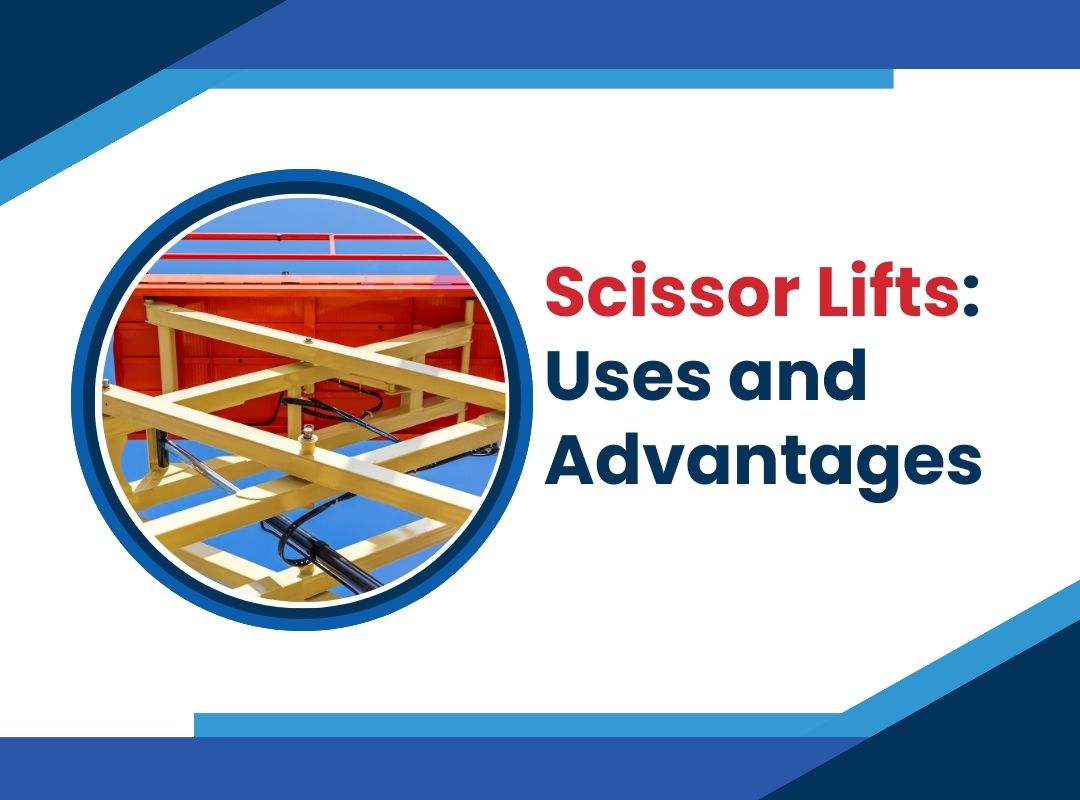In this article, we will discuss about the application and uses of Scissor Lifts. Additionally, the selection criteria for scissor lifts, such as inspection, maintenance, and typical problems they encounter, will be covered.
Making Use of Scissor Lifts:
- Construction Maintenance: Working at a height is necessary for a number of tasks, including replacing lights, hanging banners, laying bricks, pouring concrete, changing signage, and accessing utilities. Scissor lifts are a common choice within buildings since they enable staff to do tasks safely. They can also be transported and independently transferred from one construction area to another. These applications are frequently created by churches, libraries, schools, and hospitals.
- Building: For building projects with continuously shifting conditions, scissor lifts are a portable, adaptable option. Scissor lifts are therefore suitable for both general contracting and contracting for renovations.
- Delivery: In busy shipping hubs, scissor lifts are frequently used for tasks like reaching considerable heights and hauling large loads that cannot be moved by hand.
- Production: An airborne platform can increase operational efficiencies by quickly and safely ascending to considerable heights and lifting big objects. Therefore, scissor lifts are useful for manufacturing, chemical reactions, food preparation, and bricklaying.
The Advantages of Scissor Lifts:
- Increased Output: Scissor lifts are useful for loading and palletizing tasks. They also aid in determining the proper height for the work surface. They improve loading efficiency while reducing cycle times.
- Lower Workplace Injury Rates: Heavy lifting-related back ailments frequently result in time losses. To hoist items to the desired height, use a scissor lift. For instance, offloading bulky items calls for repeated, strenuous lifting of the items from the pallet to the table. In this situation, a lift table can position the pallet at table height, reducing the weight of the worker. As a result, lifting is no longer taxing on the body in either the vertical or horizontal planes. Scissor lifts can reduce the risk of acute injuries associated with heavy lifting if safety precautions are taken.
- Access High Places and Challenging Locations: The usage of this instrument enables workers to access places that would otherwise be challenging for them to get because some lifts can reach heights of up to 32 feet. Naturally, height and carrying capacity are related to the total weight. Therefore, the higher the height it can reach and the more weight it can raise, the heavier the lift.
- User-Friendly: These lifts are quite easy to operate. The controls are simple and nearly error-proof, which lessens operator fatigue. This suggests that operators may learn how to use this technology in a matter of days, enabling it to function swiftly.
- Minimum Floor Area Required: While other Aerial Work Platforms need a lot of floor room to function, scissor lifts are among the most portable. Because the total space needed is almost equivalent to the size of the lift table platform, these lifts are simple to store.
Without a question, of all the possibilities, scissors are the most affordable and adaptable. A complete warehouse might be serviced by a single vertical elevator. Additionally, hydraulic lifts use almost no energy, which increases their effectiveness.


